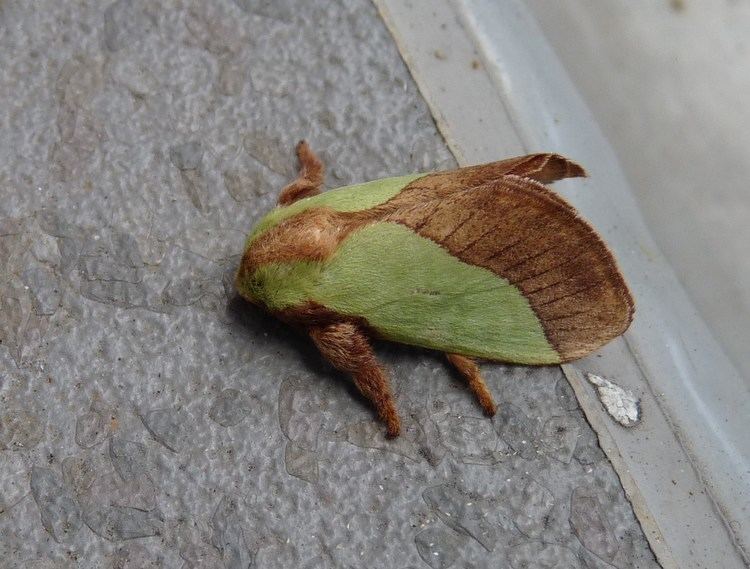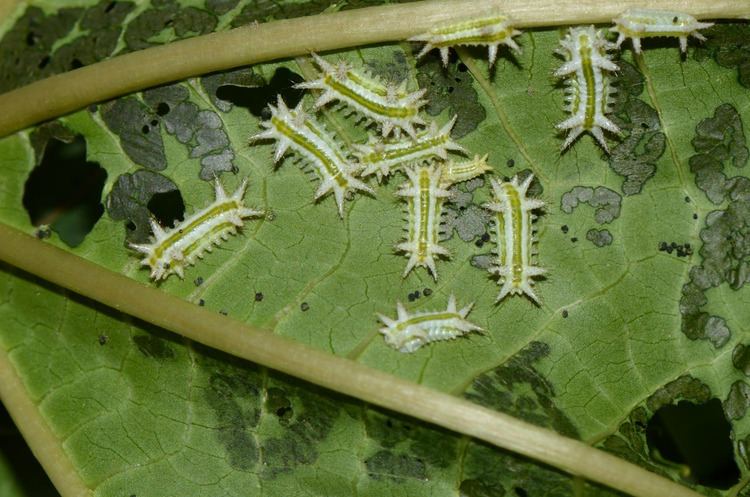Scientific name Parasa lepida Rank Species | ||
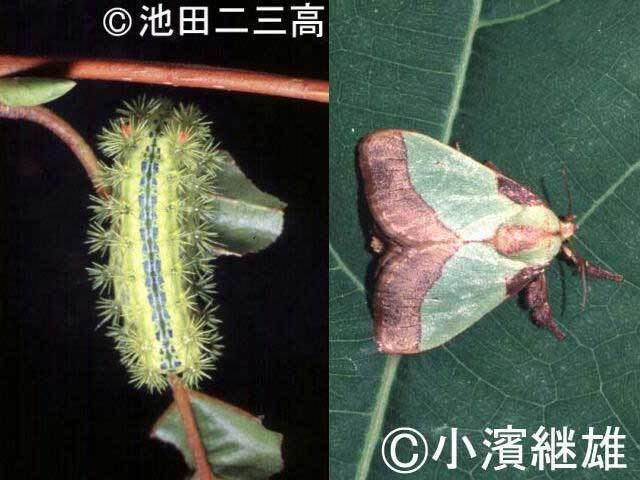 | ||
Similar Parasa consocia, Monema flavescens, Limacodidae, Parasa sinica, Mosquito bugs | ||
Parasa lepida eating palm leaf
Parasa lepida, the nettle caterpillar or blue-striped nettle grub, is a moth of the Limacodidae family. It is a native minor pest found in the Indo-Malayan region, including India, Sri Lanka, Vietnam, Malaysia and Indonesia. It is an introduced pest to urban trees in western Japan.
Contents
- Parasa lepida eating palm leaf
- Caterpillar parasa lepida nettle caterpillar blue striped nettle grub
- Description
- Ecology
- References
Caterpillar parasa lepida nettle caterpillar blue striped nettle grub
Description
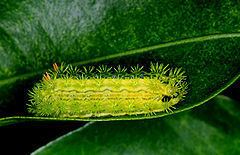
In male, head greenish, red-brown at the sides. Thorax green with a brown stripe on the vertex. Abdomen brown in color. Fore wings are pale green, resembling pea plant color. There is a red-brown basal patch on the costa. Outer area is reddish brown, widest at inner margin. Hindwing yellowish at base, reddish brown towards margin. Legs have pale tipped joints. In female, reddish-brown stripe on thorax is much wider and nearly the whole of the hindwing is reddish brown in color. Larva pale green, whitish or bright yellowish green on dorsal surface. There are three green bands throughout the body. Sub-dorsal and sub-lateral series of short spinous tubercles, the spines of the anterior and posterior tubercles tipped with red. Cocoon purple brown in color. Eggs are flat and overlapped each other. Eggs are covered by a transparent cement.
Ecology
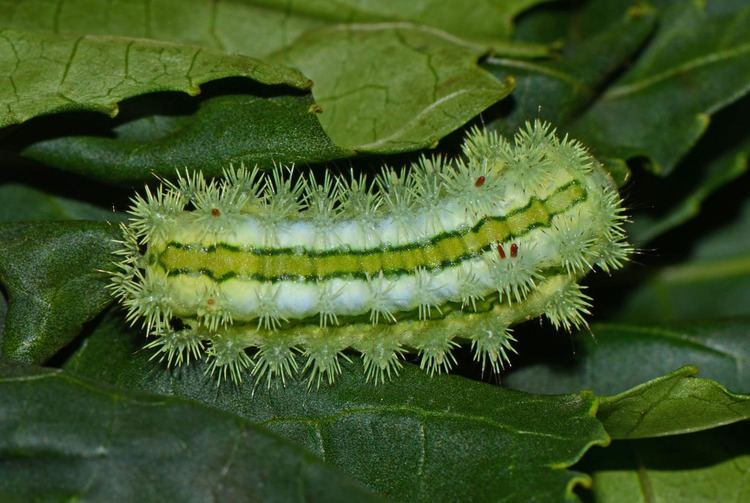
The egg stage lasted six days, the larval stage forty days and the pupal stage twenty-two days, may fluctuate with climatic changes. The larvae are considered pests and have been recorded from commercial crops like coffee, rubber, oil palm, cocoa, cassava, tea, ebony, coconut, gliricidia, banana, winged bean and mango. The female is known to emit pheromone (Z)-7,9-Decadien-1-ol as a semiochemical.
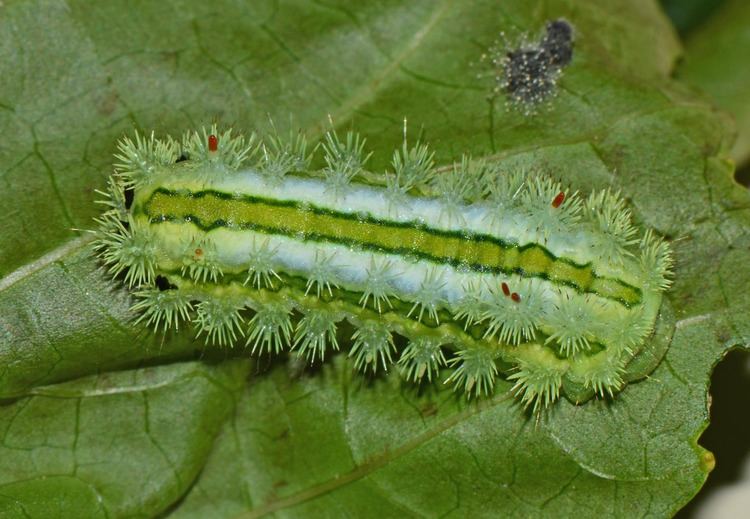
The cuckoo wasp, Chrysis shanghaiensis is a known parasite on the caterpillars. In August 1986, dead larvae were found on coconut leaves from India. Experiments showed that, multiple embedded baculovirus is the causative agent for the disease.
